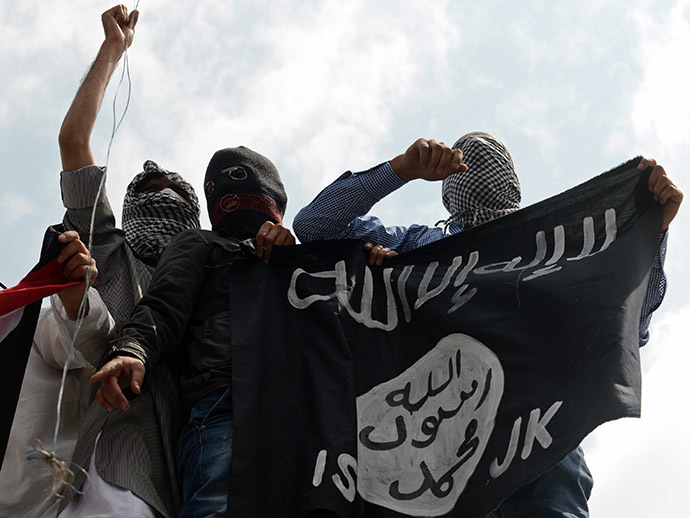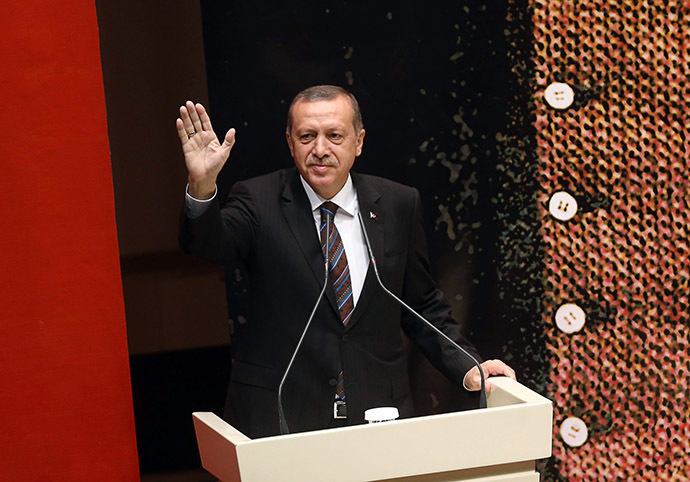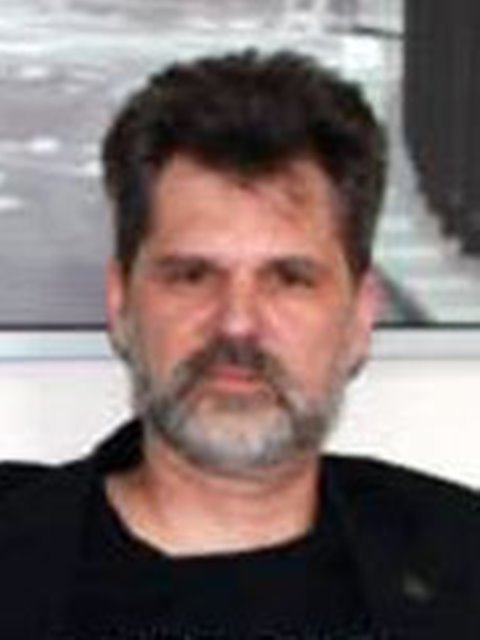Creative chaos redux: The Black Sea pivot and the evolving project for the Greater Middle East

The events of the past weeks and months show that the world is currently going through an intense and frightening time. War and armed strife bound about once more, threatening the global equilibrium, now moving towards the Black Sea.
On its northern shore, the Ukrainian proxy-battlefield in the New Cold War has recently received the full onslaught of the global media as a result of yet another disaster-struck Malaysian plane (another Boeing 777 identified as MH17). The tragedy of 298 hapless passengers dying in the crash ensured that the world suddenly took notice of the violence in the Ukraine, and the fact that yet another Malaysia Airlines Boeing was involved was a coincidence defying the laws of nature and happenstance following the unprecedented disappearance of flight MH370.
The global media, apparently acting as the voice of the West, immediately set out to blame Russia and accuse Vladimir Putin of orchestrating a war-next-door. In contrast, this very same media has remained conspicuously quiet on other occasions – for example, on the fact the United States has freely admitted its investments in the "democratic development" of the Ukraine. In early December 2013, the US State Department's Assistant Secretary for European and Eurasian Affairs, Victoria Nuland, told the US-Ukraine Foundation Conference that the US government "has supported Ukrainians as they build democratic skills and institutions, as they promote civic participation and good governance, all of which are preconditions for Ukraine to achieve its European aspirations. We’ve invested over $5 billion to assist Ukraine in these and other goals that will ensure a secure and prosperous and democratic Ukraine ... [s]ince Ukraine’s independence in 1991". Yet, the media continues to blame Russia and particularly Vladimir Putin. While apparently, behind the scenes, the US has been busy at work all along.
At the same time, the Islamic world on the Black Sea's southern reaches and beyond is also going through its own Cold War, a rivalry that pits Sunni Muslims against their Shiite brethren. At the moment, there are actually two battlefields in this intra-Islamic conflict and both have now been linked by means of the successes carried by the Islamic State, or the terrorist group formerly known as ISIS in the West – uniting the Syria and Iraqi battlefields.

These two cold-yet-hot conflicts are endangering the world we live in, affecting first-and-foremost various shapes and forms drawn onto maps and other geographical paraphernalia.
The New Cold War has already led to a redrawing of the map of Ukraine, when Russia reclaimed the Crimean peninsula that had been given to the Ukraine but sixty years ago. The intra-Islamic Cold War, in turn, appears set to drastically alter the map of the whole Middle East and confine the aftermath of the Sykes-Picot agreement (1916) to the dustbin of history.
In this context, the stance taken by the Republic of Turkey appears very important. Quite naturally, the question arises if some kind of behind-the-scenes meddling has been going on in Turkish affairs as well.
For more than a decade now the country has been governed by the AKP or Justice and Development Party, led by the charismatic yet highly divisive Recep Tayyip Erdogan. The remaining political parties perpetuate internal divisions and fail to reach any kind of workable middle-ground, which effectively means that Turkey is now going through its third phase of one-party rule (the first one overseen by the Republican People's Party (or CHP), 1923-50 and the second by the Democratic Party (DP), 1950-60). But the country appears to be on the verge of a dramatic change. For the first time in its history, the Turkish public has namely elected a new president at the head of the nation. It came as no surprise that Tayyip Erdogan won the elections, even if not as overwhelmingly as expected by the AKP faithful.
As a result, the Prime Minister will soon be appearing as President, replacing Abdullah Gul who has already indicated his willingness to return to political life. But the issue that seems to matter most right now is whether Erdogan will be able to alter the nation's constitution so as to transform Turkey's parliamentary system into a presidential one.
Erdogan became Prime Minister on 14 March 2003, replacing his friend Abdullah Gul who had taken his place as party leader (and Prime Minister) while his entry into politics was still prohibited due to his prison sentence. A timely change in Turkey's legal system ensured that Erdogan could once again assume the reins of his party and the government, with Gul becoming his deputy and foreign minister. A few days later, George W. Bush unleashed his Shock and Awe campaign against Saddam Hussein's Iraq. When Gul was still in charge, Turkey's parliament denied the United States the use of its territory in the Iraq conflict (1 March 2003), but during a second parliamentary vote under Erdogan, the United States received belated permission to use Turkish air space (20 March 2003). At the same time, however, the Turkish parliament passed a law that would allow thousands of soldiers to enter northern Iraq as well.

In this way, Tayyip Erdogan created the impression that he would be operating independently, unencumbered by US intervention and meddling. But, in reality, his ties to the US administration were already well-established before his March 2003 return to power.
Following the landslide AKP victory in 2002, the nominally unaffiliated Erdogan toured 14 EU capitals, "where he was welcomed like a head of government", according to a US Ankara Embassy confidential cable released by the WikiLeaks Public Library of US Diplomacy (PlusD). Subsequently, Erdogan also travelled to the U.S. (9-10 December 2002), where he had meetings with George W. Bush.
At the time, the ever-fastidious BBC even reported that "[i]n a sign of just how seriously the US is courting Turkey, Mr. Erdogan was given time not just with President Bush, but with some of his most senior advisers as well". In other words, Tayyip Erdogan never really seemed to have been acting in a way that was beyond the knowledge of the White House, despite the apparent rift over the Iraq war. In fact, the Turkish politician was already a well-established figure across the pond: Erdogan had been in the US on 17-25 April 1995; on 17-22 November 1996; on 20-23 December 1996; on 26 March 1998; on 26 July 2000; and on 4 July 2001, but a little more than a month prior to his setting up of his political party, the AKP; and one last time, in February 2002.
Did the Clinton White House try to influence the course of Turkish politics by means of entertaining the self-professed proponent of the Sharia and was the Bush White House merely following the precedent set by its predecessor in grooming its champion of moderate Islam?
Last year, in the wake of the Gezi protests, the Congressional Research Service published a report on Turkey "Prepared for Members and Committees of Congress" by the Middle Eastern Affairs specialist Jim Zanotti. The author is forthright in his assessment of American involvement, literally saying that "[s]everal Turkish domestic and foreign policy issues have significant relevance for US interests, and Congress plays an active role in shaping and overseeing US relations with Turkey," particularly as it is a country straddling "Europe, the Middle East, and Central Asia and [that] now has the world’s 17th-largest economy." Zanotti concludes that "Turkey’s importance to the United States may be increasing relative to previous eras of the US," but that the "effectiveness of Turkey as a US partner is likely to be tested in relation to developments in Syria, Iraq, and Iran".
Nevertheless, at the outset of his tenure, Erdogan was operating very much in line with US objectives in the Greater Middle East, making numerous public pronouncements indicative of Turkey's place and role in America's stratagems for the wider region. On January 2005 while talking to the panel moderator Klaus Schwab at Davos, the erstwhile Mayor of Istanbul Erdogan unashamedly said that "Turkey will fulfill its role in the project for the Greater Middle East [GME] in an effective manner in the region.” Three years later, on 7 February 2008m speaking to the German Süddeutsche Zeitung, Erdogan even said that "Turkey is a co-president of the GME, or rather in the initiative for the wider Middle East and North Africa."
According to Safa Haeri, an Iranian-born journalist living in France, the "American vision of the GME includes all Muslim nations, from countries of North Africa bordering the Mediterranean Sea to Pakistan, including Turkey and Israel." Erdogan was in this context really singing from the hymn sheet used by George W. Bush' Secretary of State Condoleezza Rice, who actually introduced the term “New Middle East” in June 2006 to replace the clunkier Greater Middle East. This new configuration of the region's map was supposed to come about as a result of what Rice termed "Creative Chaos" – a new map that was been pointed at by then Senator and now Vice President Joseph Biden (D-Del) in his New York Times op-ed.
This new map shows an independent Kurdistan, a Sunni state entity and a Shiite state in the region. And, as I have pointed out earlier, "[o]pponents of Erdogan and the AKP ... fear that the government’s long-term goal ... is to transform the nation state Turkey into an Anatolian federation of Muslim ethnicities," possibly even linked to this redrawn map of the region. Already in 2004, speaking on Turkish television, Erdogan said that the city of "Diyarbakir,[in Turkey's predominantly Kurdish South-East] has to become a star in [the framework of] the project for the Greater Middle East." In the June 2006 issue of the Armed Forces Journal a map of the "New Middle East", prepared by Lieutenant-Colonel Ralph Peters, was published, clearly displaying the now-Turkish city of Diyarbakir as a central location in an area called Free Kurdistan.

The current conflict going on between the Islamic State and the KRG's Peshmerga, aided by the US, the UK, and even France, could be interpreted as an unintended outcome of Condoleezza Rice's "Creative Chaos" leading to a “New Middle East" – a new Middle East where Turkey neighbors a Free Kurdistan, endowed with manifold underground hydrocarbon wealth.
The seemingly unexpected rise of the terrorist group formerly known as ISIS has disrupted this apparently seamless scheme of geographical re-engineering. A recent development in Turkey's Kurdish South East would seem to bolster the argument that the AKP-led Turkish government is allowing (or possibly encouraging) the slow and seemingly unnoticed dismemberment of the Turkish nation state. On 12 August 2014, the Metropolitan Municipality of the City of Diyarbakir renamed the Dagkapı Square as the Sheikh Said Square, honoring the figure of this Naqshbandi leader who, together with 47 of his henchmen, had been executed on the spot in 1925. The lawyer and human rights' activist Muhammed Akar, speaking for the AKP parliamentary group, said that the name change had taken place with the full approval of the country's ruling party. As a sign of things to come this apparently quite harmless alteration appears to indicate that more momentous changes could very well be on the way. Back in the early twenties when the Republic of Turkey was established, some population groups did not necessarily approve and the Naqshbandi Sheikh Said was one of the most notorious opponents. In 1925, he organized a rebellion against the Ankara government with the expressed aim of toppling the regime and replacing it with an Islamic system, in line with the Ottoman order of old. In the course of subsequent decades, Kemalist historiography interpreted this 1925 rebellion as a reactionary movement bent on reasserting the power of an Ottoman Sultan-Caliph and the strictures of the Sharia. Kurdish writers and thinkers, on the other hand, saw (and still see) the Sheikh Said Rebellion as the first manifestation of Anatolia's Kurdish population's desire and yearning for independence and freedom.
The emergence of the terrorist group formerly known as ISIS and now known as the Islamic State and the violent clashes between the Kiev government and eastern Ukrainian citizens clearly show that the best-laid plans of the White House do not necessarily lead to happy endings. The areas south and north of the Black Sea at present seem to be going through the violent consequences of the application of the principle of "creative chaos", as advocated by Condoleezza Rice and, one can only wonder now what the endgame will be: a full-blown New Cold War or even a radical overhaul of the Sykes-Picot-inspired map of the Middle East.
The statements, views and opinions expressed in this column are solely those of the author and do not necessarily represent those of RT.
The statements, views and opinions expressed in this column are solely those of the author and do not necessarily represent those of RT.













